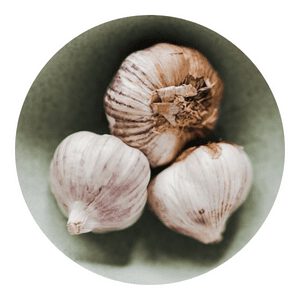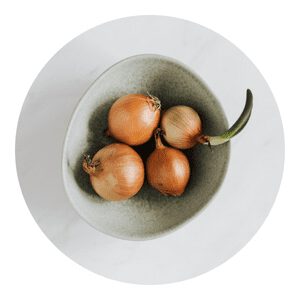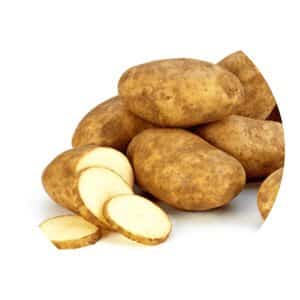What Can You Plant in the Winter in Illinois
In Illinois, wintertime gardening can be a bit of a challenge. With freezing temperatures and sometimes limited sunlight, it can be difficult to find plants that will thrive.
However, there are still a number of options for gardeners looking to add some color to their yards during the colder months.
Evergreens, ornamental kale and cabbage, and pansies are all good choices for wintertime planting in Illinois.

Illinois Winter
Gardening in Illinois during winter
While the growing season in Illinois may be over, that doesn’t mean gardeners have to pack up their tools and wait for spring.
With a little planning, there are plenty of plants that can thrive during the winter months.
One of the most popular winter plants is the evergreen. Evergreens not only provide color during the dreary winter months, but they also make excellent windbreaks and privacy screens.
Some common evergreens for Illinois gardens include: spruce, fir, pine, and cedar.
If you’re looking for something a little more colorful, consider planting some annuals.
Pansies are one of the hardiest annuals and can often be found blooming even when there’s snow on the ground.
The best vegetables to grow in winter Illinois
When it comes to growing vegetables, there are a few that do well in the winter months in Illinois.
These include:
Parsnips
Parsnips are a versatile winter root vegetable that can be used in a variety of dishes.
They are a good source of fiber and vitamins, and they can be grown in winter in Illinois.
Parsnips can be planted in the fall, and they will overwinter in the ground. They can also be planted in the spring, but they will not produce as well.
Parsnips need full sun and well-drained soil to grow well.
Parsnips can be harvested when they are 6-8 inches long. They can be stored in a cool, dark place for up to two months.
When cooking parsnips, they can be roasted, mashed, or added to soups and stews.
When the snow falls and the temperatures drop, it can be hard to remember what to plant. But there are still many things you can grow, if you know which ones are best for Illinois. Pansies and mums are pretty and tough, and they'll bloom all winter long. add some color to your yard, no matter how cold it gets.
Chappy The Gardener
Brussels Sprouts
While Brussels sprouts may not be the most popular vegetable, they are a great option to grow in the winter in Illinois.
They are a hardy vegetable that can withstand cold weather and even frost.
One of the best things about Brussels sprouts is that they actually taste better after being exposed to frost.
To plant Brussels sprouts in Illinois, start by getting plants from a local nursery or garden center.
Be sure to choose plants that are marked as tolerant to cold weather.
Plant them in early November, making sure to space them about 18 inches apart.
Water regularly and fertilize every few weeks. You should see sprouts starting to form within a few months.
Harvesting Brussels sprouts is easy – just wait until the heads are about the size of a nickel.
Cut them off the stalk, being careful not to damage the rest of the plant.
Kale
Kale is a winter vegetable that thrives in Illinois. This hardy green is packed with nutrients and can withstand frosty temperatures.
Kale can be planted in October and will provide fresh greens all winter long.
To plant kale, start with well-drained soil.
Amend the soil with compost or organic matter to help retain moisture.
Kale seeds can be directly sown into the ground or started indoors and then transplanted outside.
For best results, water kale regularly and fertilize every few weeks with an organic fertilizer. Protect plants from pests by covering with row covers or floating row covers.
Kale is ready to harvest when leaves are 6-8 inches long.
Cut leaves from the bottom of the plant upwards, being careful not to damage the plant.
Onions
Onions are one of the few vegetables that can be planted in the winter in Illinois. They are a cool weather crop and can tolerate frost, so they can be planted as early as late February.
Onions need about 6 weeks of cool weather to mature, so they should be planted before the average last frost date in Illinois, which is April 15.
Onions can be started from seed, sets, or transplants. Sets are small onion bulbs that have been grown for one season and then dried. They are easier to plant than seeds and will produce larger onions than if you were to start from seed.
Transplants are young onion plants that have been started indoors and then transplanted outdoors. They are the most expensive option but will give you the earliest harvest.
To plant onions, prepare your bed by tilling the soil and adding compost or manure.
Garlic
When it comes to garlic, most people think of it as a summer crop. However, garlic can actually be planted in the winter in Illinois.
This is because garlic is a hardy plant that can withstand cold temperatures. In fact, planting garlic in the winter can actually help improve the flavor of the bulbs.
Garlic is best planted in early December, before the ground freezes. To plant, simply break apart the cloves and plant them about two inches deep in well-drained soil.
You don’t need to fertilize or water the garlic, as it will go dormant over winter and won’t need any extra attention.
In the spring, your garlic will start to grow and should be ready to harvest by late May or early June.
When harvesting, be careful not to damage the bulbs.
Tips for planting in winter Illinois
When it comes to planting in winter, Illinois residents have a few options.
One is to wait until spring when the ground has thawed and the weather is more conducive to plant growth.
Another option is to choose plants that are tolerant of cold weather and can withstand the elements.
Some plants that do well in winter include: evergreens, holly, juniper, pine, spruce, and yew. These plants can provide color and interest in the landscape when other plants are dormant.
flowering shrubs such as camellia, azalea, and rhododendron can also add some brightness to the winter garden.
When choosing plants for winter, it is important to consider their sun and water needs.
Evergreens and other shade-loving plants will do well in areas that experience little sunlight during the winter months.
Winter gardening tools
If you’re looking to do some winter gardening in Illinois, you’ll need the right tools.
A shovel is a must-have for digging in the snow, and a hoe can be helpful for breaking up any ice that might have formed on the ground.
You’ll also need a rake to collect leaves and debris, and a tarp to cover your plants if there’s a chance of frost.
To keep your plants healthy during the winter months, it’s important to water them regularly.
A watering can or hose with a sprinkler attachment will make this task easier.
And finally, don’t forget to add some mulch around your plants to help protect their roots from the cold.
Helps Us Grow – Share If You Like















